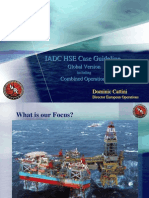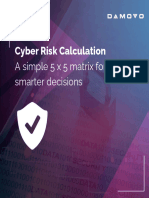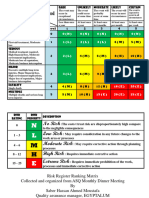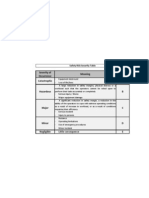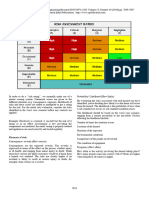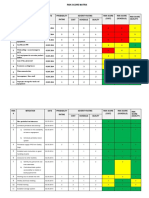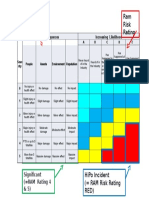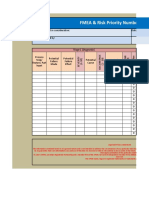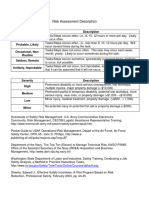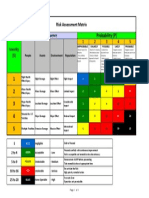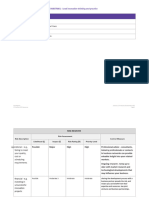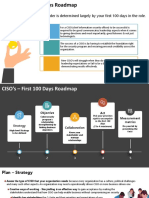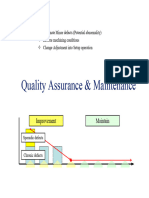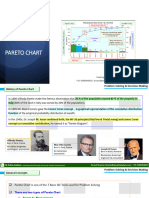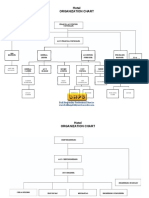0% found this document useful (0 votes)
756 views2 pagesRART
This document provides information on risk assessment and treatment for an organization. It outlines the context, identifies potential risks from organizational processes, and establishes a risk rating system. Direct and indirect impacts are considered for interested parties. A risk priority number is calculated by multiplying the severity and likelihood ratings. Control methods are identified along with responsibilities and target dates. The risk exposure is then reassessed after control methods.
Uploaded by
R.BALASUBRAMANICopyright
© © All Rights Reserved
We take content rights seriously. If you suspect this is your content, claim it here.
Available Formats
Download as XLS, PDF, TXT or read online on Scribd
0% found this document useful (0 votes)
756 views2 pagesRART
This document provides information on risk assessment and treatment for an organization. It outlines the context, identifies potential risks from organizational processes, and establishes a risk rating system. Direct and indirect impacts are considered for interested parties. A risk priority number is calculated by multiplying the severity and likelihood ratings. Control methods are identified along with responsibilities and target dates. The risk exposure is then reassessed after control methods.
Uploaded by
R.BALASUBRAMANICopyright
© © All Rights Reserved
We take content rights seriously. If you suspect this is your content, claim it here.
Available Formats
Download as XLS, PDF, TXT or read online on Scribd
/ 2







